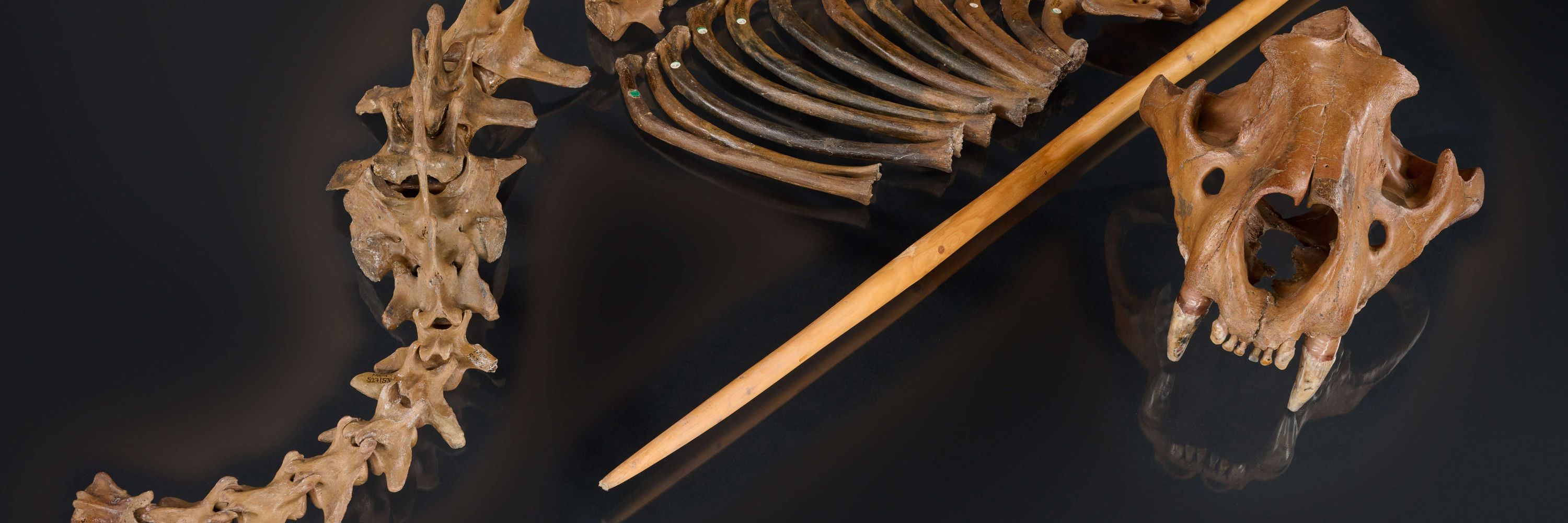
Gabriele Russo
@gabrieleru1.bsky.social
PhD student in Zooarchaeology at Uni Tübingen - Project REVIVE #Paleolithic #Archaeology #Zooarchaeology #AnimalEcology #Science #Nature
Reposted by Gabriele Russo
So proud to see our new paper out in PNAS spearheaded by @emilypigott.bsky.social She found a tiny 46,000 yr old Neanderthal bone at Starosele (Crimea). DNA work revealed long-distance connections across Eurasia, supported by stone tool evidence @heasvienna.bsky.social
www.pnas.org/doi/10.1073/...
www.pnas.org/doi/10.1073/...

October 29, 2025 at 9:17 AM
So proud to see our new paper out in PNAS spearheaded by @emilypigott.bsky.social She found a tiny 46,000 yr old Neanderthal bone at Starosele (Crimea). DNA work revealed long-distance connections across Eurasia, supported by stone tool evidence @heasvienna.bsky.social
www.pnas.org/doi/10.1073/...
www.pnas.org/doi/10.1073/...
Reposted by Gabriele Russo
"We found no evidence of migratory behavior in species that exhibit this behavior today. Ancient foragers likely hunted prey that were available year-round, consistent with zooarchaeological and genetic evidence for reduced mobility at the end of the Pleistocene." 🏺🧪🦣

Biogeochemical evidence for targeted landscape use in ancient foragers of Malawi - Communications Earth & Environment
Foragers hunted small game locally and procured most large prey in riparian habitats and Afromontane grasslands to the southeast of the Kasitu Valley of northern Malawi, suggesting that migratory beha...
www.nature.com
October 29, 2025 at 2:36 AM
"We found no evidence of migratory behavior in species that exhibit this behavior today. Ancient foragers likely hunted prey that were available year-round, consistent with zooarchaeological and genetic evidence for reduced mobility at the end of the Pleistocene." 🏺🧪🦣
A new landmark study of fossil teeth confirms that adaptable generalists survived Pleistocene climate shifts, while specialized picky eaters went extinct. This warns that modern conservation must prioritize habitat diversity to build the resilient ecosystems essential for survival.
#Conservation 🧪🦣
#Conservation 🧪🦣

Faunal persistence and ecological flexibility in Pleistocene Southeast Asia revealed through multi-isotope analysis
Multi-isotope approaches provide valuable insights into mammalian ecological niches and factors contributing to extirpation.
www.science.org
October 21, 2025 at 1:05 PM
A new landmark study of fossil teeth confirms that adaptable generalists survived Pleistocene climate shifts, while specialized picky eaters went extinct. This warns that modern conservation must prioritize habitat diversity to build the resilient ecosystems essential for survival.
#Conservation 🧪🦣
#Conservation 🧪🦣
Reposted by Gabriele Russo
New fossils reveal the hand of Paranthropus boisei🏺🧪
C. Mongle, Meave Leakey, @louiseleakey.bsky.social et al
www.nature.com/articles/s41...
Suggests P. boisei capable of tool making and use in some capacity while also supports proposed dichotomy of dietary adaptations between Paranthropus and Homo
C. Mongle, Meave Leakey, @louiseleakey.bsky.social et al
www.nature.com/articles/s41...
Suggests P. boisei capable of tool making and use in some capacity while also supports proposed dichotomy of dietary adaptations between Paranthropus and Homo

October 17, 2025 at 3:31 PM
New fossils reveal the hand of Paranthropus boisei🏺🧪
C. Mongle, Meave Leakey, @louiseleakey.bsky.social et al
www.nature.com/articles/s41...
Suggests P. boisei capable of tool making and use in some capacity while also supports proposed dichotomy of dietary adaptations between Paranthropus and Homo
C. Mongle, Meave Leakey, @louiseleakey.bsky.social et al
www.nature.com/articles/s41...
Suggests P. boisei capable of tool making and use in some capacity while also supports proposed dichotomy of dietary adaptations between Paranthropus and Homo
Reposted by Gabriele Russo
Turns out #hippos 🦛 lived in Europe much more recently than we thought!
Fossil & genetic evidence from Germany shows they roamed 50,000–31,000 years ago, right in the middle of the last #iceage 🥶🌨️
Same species as today’s African hippos, thriving during warmer periods.
🦣🧪🧬
Fossil & genetic evidence from Germany shows they roamed 50,000–31,000 years ago, right in the middle of the last #iceage 🥶🌨️
Same species as today’s African hippos, thriving during warmer periods.
🦣🧪🧬

Ancient DNA and dating evidence for the dispersal of hippos into central Europe during the last glacial
Arnold et al. present evidence that Late Pleistocene hippos from the Upper Rhine Graben
show close genetic ties to modern African hippos. Although hippos have been thought
to have gone extinct around ...
www.cell.com
October 9, 2025 at 4:53 PM
Wow! This is a nice news 👇
‘Thrilled’ Indonesian scientists celebrate return of fossil trove from the Netherlands
The items to be returned, which include Java Man, were collected during the colonial era 🏺🧪
www.science.org/content/arti...
The items to be returned, which include Java Man, were collected during the colonial era 🏺🧪
www.science.org/content/arti...
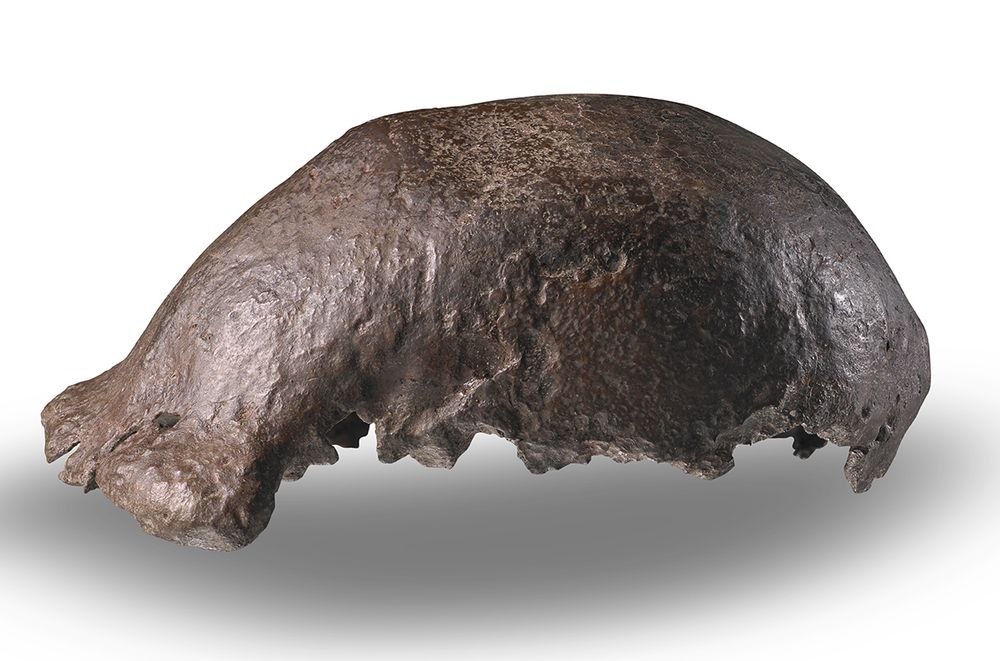
October 3, 2025 at 1:39 PM
Wow! This is a nice news 👇
Reposted by Gabriele Russo
"I do know that when talking to people who perhaps think very differently, the only chance you have of getting them to think in a different way is to touch the heart." — Dr. Jane Goodall (1934-2025)
Thanks, Jane, for touching our hearts.
Thanks, Jane, for touching our hearts.


October 1, 2025 at 9:18 PM
"I do know that when talking to people who perhaps think very differently, the only chance you have of getting them to think in a different way is to touch the heart." — Dr. Jane Goodall (1934-2025)
Thanks, Jane, for touching our hearts.
Thanks, Jane, for touching our hearts.
Schöningen never stops to amaze!
Scientists have just recovered 300,000-year-old #horse #aDNA from the site 🤯 the oldest ever found in open air.
And those horses? Ancestors of all modern horses 🐎🧬
🧪🏺🦣
Links here 👇
Paper: www.nature.com/articles/s41...
Press: uni-tuebingen.de/en/universit...
Scientists have just recovered 300,000-year-old #horse #aDNA from the site 🤯 the oldest ever found in open air.
And those horses? Ancestors of all modern horses 🐎🧬
🧪🏺🦣
Links here 👇
Paper: www.nature.com/articles/s41...
Press: uni-tuebingen.de/en/universit...

Mitochondrial genomes of Middle Pleistocene horses from the open-air site complex of Schöningen - Nature Ecology & Evolution
Mitochondrial DNA from horses at the Middle Pleistocene archaeological site of Schöningen reveals insight into the evolutionary history of horses and advances techniques for the analysis of ancient DNA retrieved from highly degraded samples.
www.nature.com
October 1, 2025 at 9:58 AM
Schöningen never stops to amaze!
Scientists have just recovered 300,000-year-old #horse #aDNA from the site 🤯 the oldest ever found in open air.
And those horses? Ancestors of all modern horses 🐎🧬
🧪🏺🦣
Links here 👇
Paper: www.nature.com/articles/s41...
Press: uni-tuebingen.de/en/universit...
Scientists have just recovered 300,000-year-old #horse #aDNA from the site 🤯 the oldest ever found in open air.
And those horses? Ancestors of all modern horses 🐎🧬
🧪🏺🦣
Links here 👇
Paper: www.nature.com/articles/s41...
Press: uni-tuebingen.de/en/universit...
Reposted by Gabriele Russo
New discovery! Here @mariaguagnin.bsky.social and our team report on 12,000-year-old life-size camel rock art engravings in the Saudi desert. #GreenArabia @griffith.edu.au www.nature.com/articles/s41...

September 30, 2025 at 3:34 PM
New discovery! Here @mariaguagnin.bsky.social and our team report on 12,000-year-old life-size camel rock art engravings in the Saudi desert. #GreenArabia @griffith.edu.au www.nature.com/articles/s41...
The oldest use of blue pigment in Europe! 💙
At Mühlheim-Dietesheim (Germany), traces of azurite were found on a Final Palaeolithic artefact challenging the idea that blue was absent from Ice Age art.
So interesting! 🤔 Why hasn’t it been found elsewhere? Body paint, lost contexts?
🦣🏺🧪 #Paleolithic
At Mühlheim-Dietesheim (Germany), traces of azurite were found on a Final Palaeolithic artefact challenging the idea that blue was absent from Ice Age art.
So interesting! 🤔 Why hasn’t it been found elsewhere? Body paint, lost contexts?
🦣🏺🧪 #Paleolithic

The earliest evidence of blue pigment use in Europe | Antiquity | Cambridge Core
The earliest evidence of blue pigment use in Europe
www.cambridge.org
September 29, 2025 at 11:01 AM
The oldest use of blue pigment in Europe! 💙
At Mühlheim-Dietesheim (Germany), traces of azurite were found on a Final Palaeolithic artefact challenging the idea that blue was absent from Ice Age art.
So interesting! 🤔 Why hasn’t it been found elsewhere? Body paint, lost contexts?
🦣🏺🧪 #Paleolithic
At Mühlheim-Dietesheim (Germany), traces of azurite were found on a Final Palaeolithic artefact challenging the idea that blue was absent from Ice Age art.
So interesting! 🤔 Why hasn’t it been found elsewhere? Body paint, lost contexts?
🦣🏺🧪 #Paleolithic
Thrilled to have won the Student Poster Prize at #ESHE2025! 🏆 Grateful for the opportunity to share my work on Lebanese fauna and for all the inspiring conversations throughout the conference!


September 27, 2025 at 4:14 PM
Thrilled to have won the Student Poster Prize at #ESHE2025! 🏆 Grateful for the opportunity to share my work on Lebanese fauna and for all the inspiring conversations throughout the conference!
Yesterday I had the pleasure of presenting my poster on large carnivore 🐆 exploitation in Lebanon at #ESHE2025. Such a great venue for it, with so many interesting posters around! I also got the chance to chat with lots of amazing people! #Paleolithic #zooarcheology 🏺🦣🧪
And finally today, team members Gabriel Russo and Marya Soubra presented their latest work on sites in Lebanon at #ESHE2025 poster session! 🌍🐆🦴🐾 Congratulations to both! 🤗🤗


September 27, 2025 at 8:06 AM
Yesterday I had the pleasure of presenting my poster on large carnivore 🐆 exploitation in Lebanon at #ESHE2025. Such a great venue for it, with so many interesting posters around! I also got the chance to chat with lots of amazing people! #Paleolithic #zooarcheology 🏺🦣🧪
Great talk @armandofalcucci.bsky.social! Impressive depth of data analysis, and I really appreciated the open science approach. Finally, robust evidence that the Ahmarian and Protoaurignacian aren’t directly linked
#Paleolithic #lithics 🏺🦣🧪
#Paleolithic #lithics 🏺🦣🧪
#ESHE2025
Armando Falcucci ‘Convergent technological trajectories in early modern humans across the Mediterranean’
Ahmarian (AH) ancestral to Protoaurignacian (PA)?
Test: quant anal of AH fr Ksar Akil & Al-Ansab 1 & PA: NO evidence of PA ancestry or E-W diffusion signal
Chatelperronian source 😳?
Armando Falcucci ‘Convergent technological trajectories in early modern humans across the Mediterranean’
Ahmarian (AH) ancestral to Protoaurignacian (PA)?
Test: quant anal of AH fr Ksar Akil & Al-Ansab 1 & PA: NO evidence of PA ancestry or E-W diffusion signal
Chatelperronian source 😳?
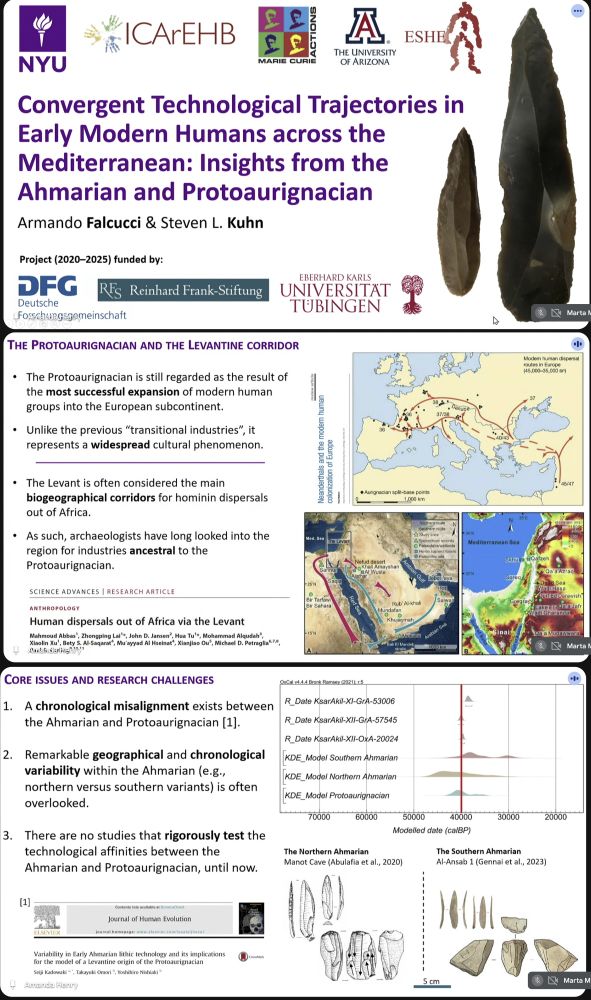
September 26, 2025 at 8:17 AM
Great talk @armandofalcucci.bsky.social! Impressive depth of data analysis, and I really appreciated the open science approach. Finally, robust evidence that the Ahmarian and Protoaurignacian aren’t directly linked
#Paleolithic #lithics 🏺🦣🧪
#Paleolithic #lithics 🏺🦣🧪
Reposted by Gabriele Russo
#ESHE2025 kicks off on 24 Sept with tours at the NHMN in Paris, followed by a keynote panel on the 25th, conference talks, posters (25th to 27th) & an excursion to Resson and Grotte à la Peinture on the 28th. More info here: bit.ly/3G9CeiQ


April 14, 2025 at 9:14 AM
#ESHE2025 kicks off on 24 Sept with tours at the NHMN in Paris, followed by a keynote panel on the 25th, conference talks, posters (25th to 27th) & an excursion to Resson and Grotte à la Peinture on the 28th. More info here: bit.ly/3G9CeiQ
#AI is opening a window into #animal #communication, bonobos build phrases, whales craft alphabets 🐒🐋 It’s thrilling to imagine talking back, but... what if our words change their world forever?
Here is a good read to stay updated
Here is a good read to stay updated

AI is helping to decode animals’ speech. Will it also let us talk with them?
The complexity of vocal communication in some primates, whales and birds might approach that of human language.
www.nature.com
September 20, 2025 at 10:30 PM
#AI is opening a window into #animal #communication, bonobos build phrases, whales craft alphabets 🐒🐋 It’s thrilling to imagine talking back, but... what if our words change their world forever?
Here is a good read to stay updated
Here is a good read to stay updated
Imagine a rhino horn longer than most people are tall… Woolly rhinos had them! Record-breaking 1.65 m nasal horn found in Siberia belonged to a 40+ year-old female 🦏❄️
#Paleontology #IceAge #Prehistory 🧪🦣
Paper 👇
zslpublications.onlinelibrary.wiley.com/doi/10.1111/...
#Paleontology #IceAge #Prehistory 🧪🦣
Paper 👇
zslpublications.onlinelibrary.wiley.com/doi/10.1111/...

September 18, 2025 at 3:20 PM
Imagine a rhino horn longer than most people are tall… Woolly rhinos had them! Record-breaking 1.65 m nasal horn found in Siberia belonged to a 40+ year-old female 🦏❄️
#Paleontology #IceAge #Prehistory 🧪🦣
Paper 👇
zslpublications.onlinelibrary.wiley.com/doi/10.1111/...
#Paleontology #IceAge #Prehistory 🧪🦣
Paper 👇
zslpublications.onlinelibrary.wiley.com/doi/10.1111/...
A new cool research using AI reveals that Homo habilis fossils 💀 show #leopard bite marks 🐆 For decades, Homo habilis was cast as a toolmaker, meat-eater, or even predator. But this study shows that at least some were actually leopard prey!
#AI #Archeology 🧪🏺🦣
#AI #Archeology 🧪🏺🦣

NYAS Publications
The traditional view regarding Homo habilis as the primary agent in stone-tool making and animal butchery has long shaped our understanding of human evolution. Recent advances in artificial intellige....
nyaspubs.onlinelibrary.wiley.com
September 18, 2025 at 3:10 PM
A new cool research using AI reveals that Homo habilis fossils 💀 show #leopard bite marks 🐆 For decades, Homo habilis was cast as a toolmaker, meat-eater, or even predator. But this study shows that at least some were actually leopard prey!
#AI #Archeology 🧪🏺🦣
#AI #Archeology 🧪🏺🦣
Reposted by Gabriele Russo
Prehistoric Planet Ice Age out later this year... such a thrill to put this series together, oh my goodness are you in for a treat :) Hopefully news on events and publicity coming soon! Sloths, cats, rhinos, glyptodonts AND SOOOO MUCH MORE!!



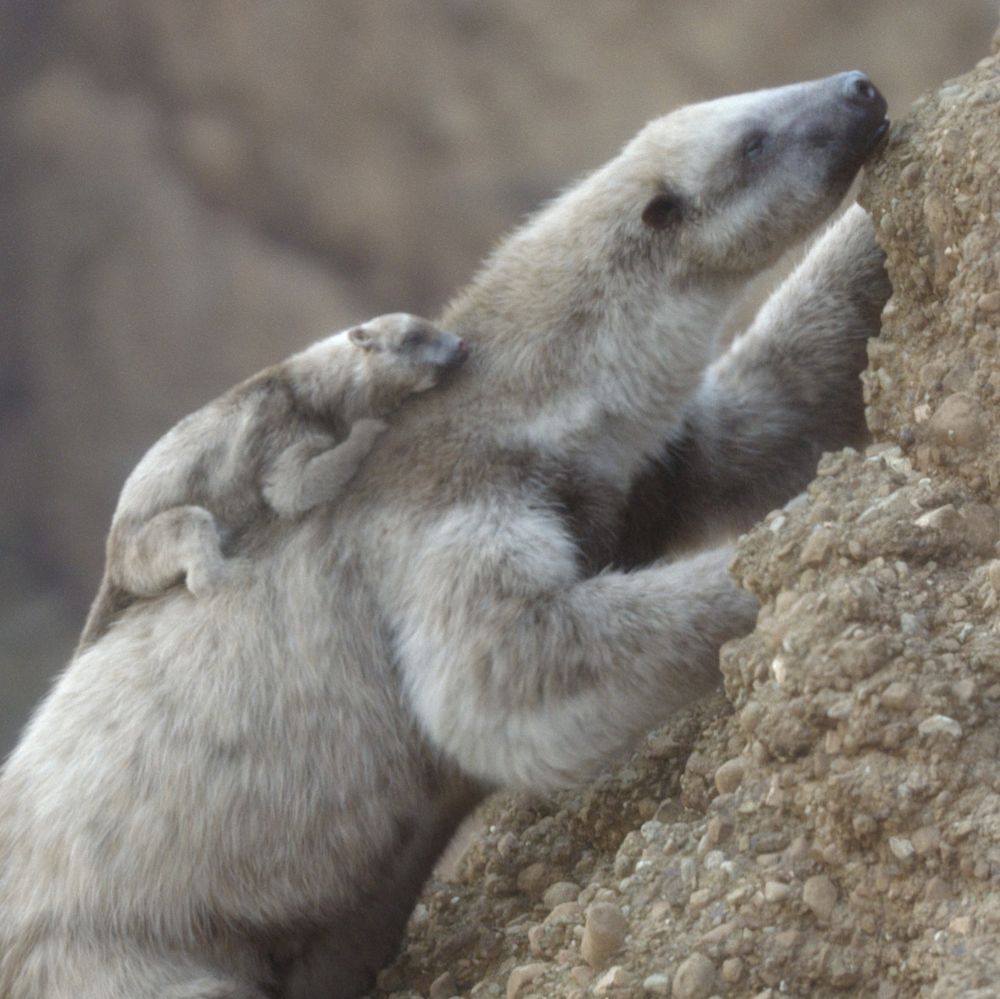
September 10, 2025 at 8:17 AM
Prehistoric Planet Ice Age out later this year... such a thrill to put this series together, oh my goodness are you in for a treat :) Hopefully news on events and publicity coming soon! Sloths, cats, rhinos, glyptodonts AND SOOOO MUCH MORE!!
Found the oldest artefact-bearing sediments in Northern Europe (773–607kya), showing hominins lived above 51°N even during glacial stages! Crazy 🥶
#Archeology 🦣🧪
#Archeology 🦣🧪
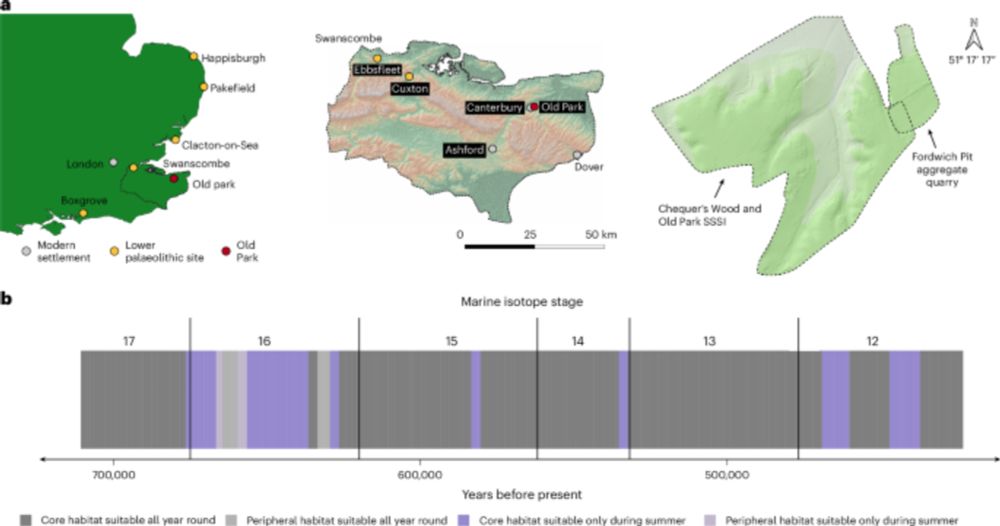
Hominin glacial-stage occupation 712,000 to 424,000 years ago at Fordwich Pit, Old Park (Canterbury, UK) - Nature Ecology & Evolution
The authors report Acheulean hominin occupation of eastern Britain during glacial marine isotope stages 17–16 and again in glacial marine isotope stage 12 via stone tools in sediments dated to 712,000...
www.nature.com
September 5, 2025 at 11:42 AM
Found the oldest artefact-bearing sediments in Northern Europe (773–607kya), showing hominins lived above 51°N even during glacial stages! Crazy 🥶
#Archeology 🦣🧪
#Archeology 🦣🧪
Reposted by Gabriele Russo
New study of cave #bear tooth microwear 🐻🦷 shows they weren’t strict herbivores but had seasonal, opportunistic diets, like modern bears. This flexibility, plus niche overlap with brown bears, offers a more complex picture of their path to extinction!
#zooarchaeology 🦣🏺
#zooarchaeology 🦣🏺

Dental microwear of cave bear (Ursus spelaeus) reveals locally adapted foraging strategies in South-Eastern Europe during late MIS 3
Cave bears (Ursus spelaeus sensu lato) represent a remarkable example of Late Pleistocene megafauna, whose ecology and extinction dynamics remain a su…
www.sciencedirect.com
August 19, 2025 at 5:06 PM
New study of cave #bear tooth microwear 🐻🦷 shows they weren’t strict herbivores but had seasonal, opportunistic diets, like modern bears. This flexibility, plus niche overlap with brown bears, offers a more complex picture of their path to extinction!
#zooarchaeology 🦣🏺
#zooarchaeology 🦣🏺
Reposted by Gabriele Russo
Today in stone tool news... 🏺🧪

2.6 million-year-old stone tools reveal ancient human relatives were 'forward planning' 600,000 years earlier than thought
Hundreds of stone tools discovered in Kenya have revealed that human relatives traveled long distances to find raw material.
www.livescience.com
August 15, 2025 at 6:36 PM
Today in stone tool news... 🏺🧪
New fossils 🦴 from Ethiopia reveal that ~2.8 million years ago in East Africa, four kinds of early hominins lived side-by-side, including a mysterious new Australopithecus. Our family tree even more crowded and confusing now 👌
#Paleoanthropology #HumanEvolution
🦣🏺🧪
#Paleoanthropology #HumanEvolution
🦣🏺🧪

New discoveries of Australopithecus and Homo from Ledi-Geraru, Ethiopia - Nature
Hominin fossils from the Ledi-Geraru Research Project area, Ethiopia, suggest that early Homo and Australopithecus species co-existed in the region more than 2.5 million years ago.
www.nature.com
August 15, 2025 at 5:17 PM
New fossils 🦴 from Ethiopia reveal that ~2.8 million years ago in East Africa, four kinds of early hominins lived side-by-side, including a mysterious new Australopithecus. Our family tree even more crowded and confusing now 👌
#Paleoanthropology #HumanEvolution
🦣🏺🧪
#Paleoanthropology #HumanEvolution
🦣🏺🧪



